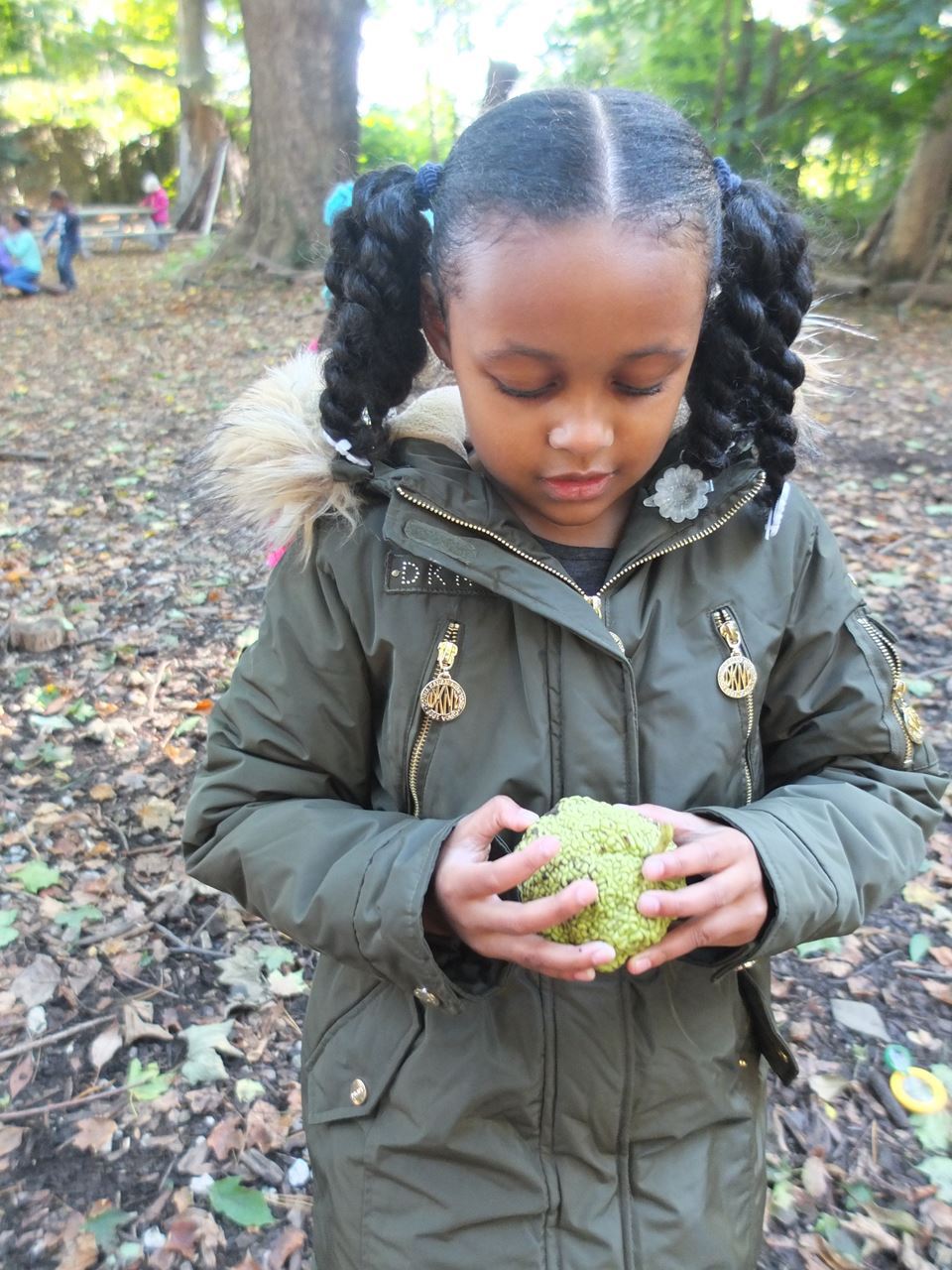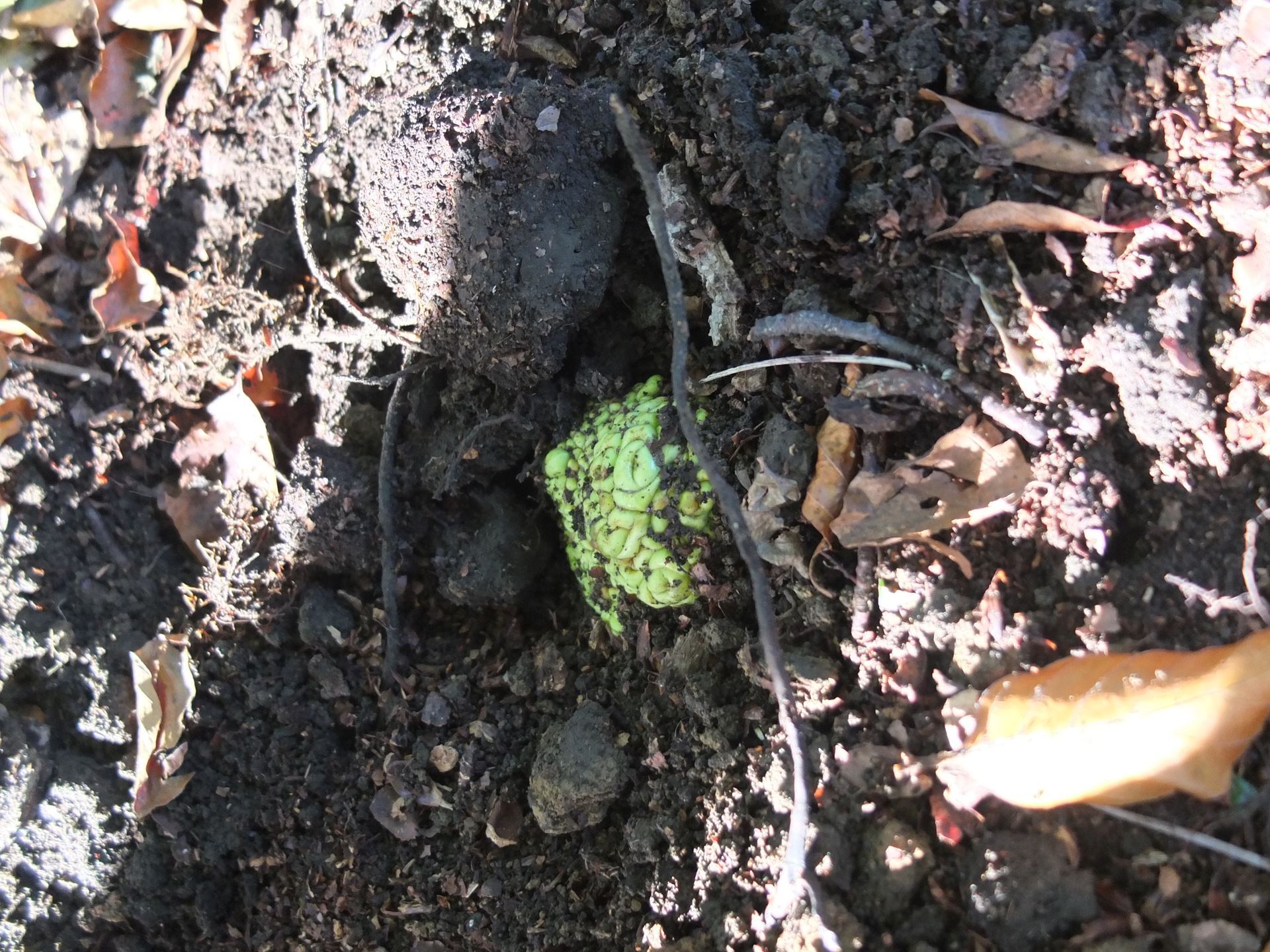By Rachel Schwartzman, Director/Lead Teacher of Forest Days
On a recent day in the forest, a child picked up a yellow green object from the ground. It was about the size of a softball, and the surface was wiggly and bumpy, almost like a pile of green worms formed into a fruit. She brought it to me and asked, “Teacher, what is this?” My response was to ask her, “What do you think it is?” She asserted that she did not know, and so I probed a bit further…”What color is it? How does it feel? Smell? Where did you find it?”
This conversation brought a larger group of children around to see what we were discussing. A rich conversation about the identity of this object ensued. One child suggested, “Maybe it’s a home for bugs” while another stated, “I think it’s fruit that grew on a tree.” Some children went on hunts to see if they could find the location of where the object came from, and someone found one that was cracked open and we explored the inside which contained tiny seeds. A group of children decided to plant them to see what would happen.
A colleague and I got into an interesting conversation about how I had responded to the simple question: “What is it?” She wondered why I had chosen not to tell the child the fact: It is an Osage orange. I suspect, if I had told the child that answer, the conversation would have ended there. What would the child have learned? And what message does she receive if all questions and answers end with an adult.
By turning the question around, and engaging with the children on a journey of more questions, what messages did they receive?
· I can have ideas and theories
· It’s okay to be wrong
· My friends can have ideas and theories
· We can look for clues to help us make theories
· We can test our theories
· The teacher is not the only source for answers to my questions
As teachers, our job is to ignite the fire. To create a culture of curiosity, conversation and debate. To value the perspectives of others and their thinking. Our job is so much more than delivering answers.
Now the children have an authentic relationship to Osage orange through their own exploration. They know some things about this object that they discovered themselves. And, on another day, if we happen to discover the name of Osage orange in a book, the words become much more meaningful.


.png)